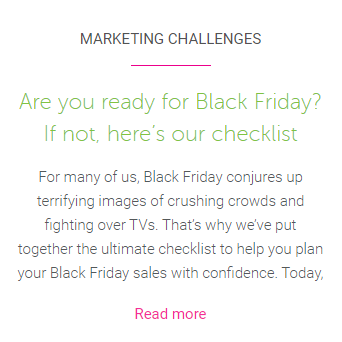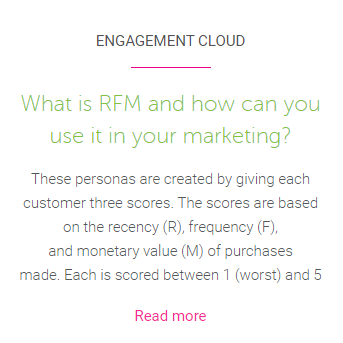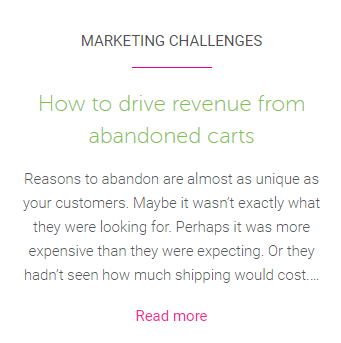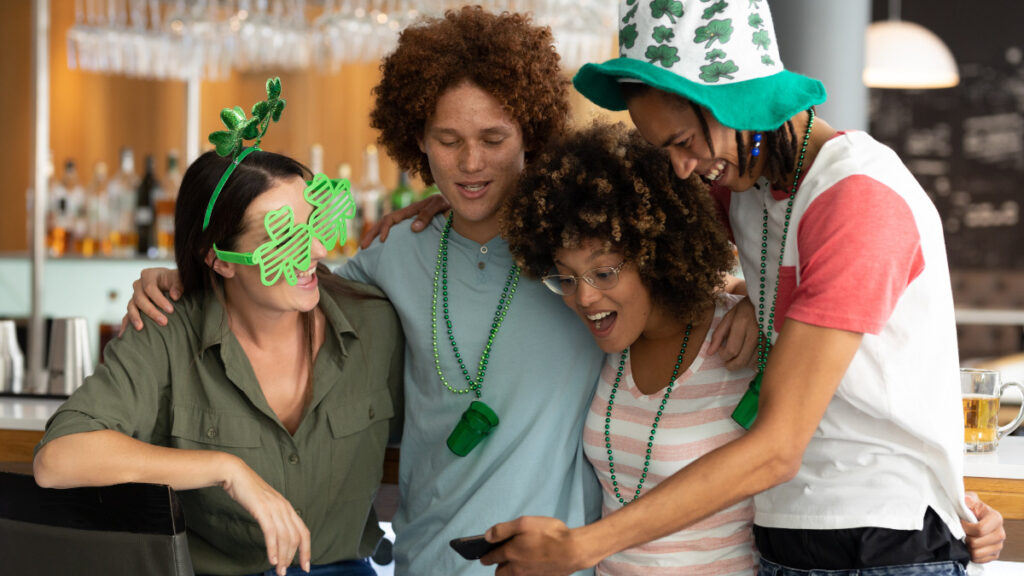Making the most of your Black Friday campaign
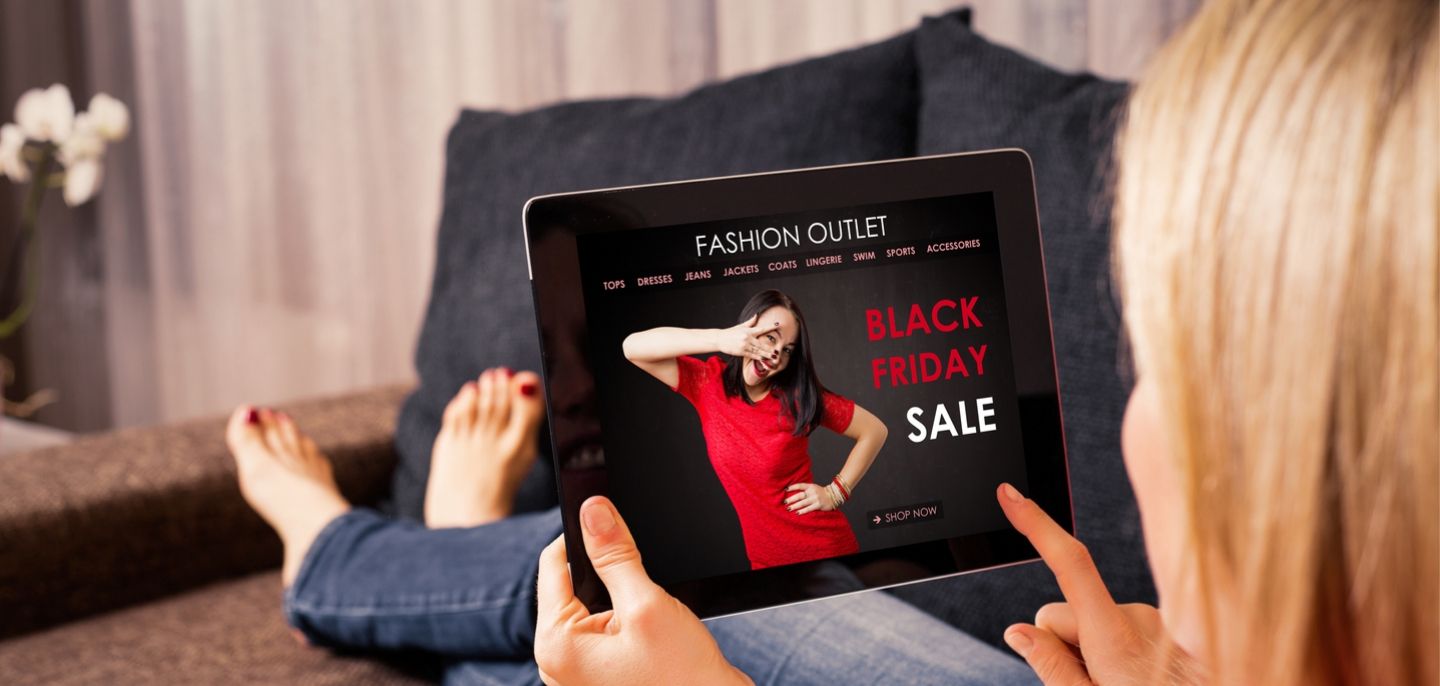

It’s, therefore, safe to say that getting your Black Friday campaign right is essential.
Over the last ten years, we’ve seen a massive shift in Black Friday sales. Traditionally an in-store shopping extravaganza, Black Friday deals are now being scooped up by online shoppers, sparking a clicks vs. bricks war. A whopping $6.2bn was spent online in the US on Black Friday – up 23.6% in 2017.
Consumers are clearly shunning the stores in favor of a more accessible and stress-free way to bag the shopping day’s deals. This presents a tricky challenge to ecommerce brands; while high-street retailers are rewarded with limited rivalry, online stores are fighting in an arena where their voices can be silenced by the sheer size of the competition. Our November send volume is proof that consumers’ inboxes were groaning with messages from brands: 1.6 billion emails were sent from the platform, peaking over the Black Friday weekend.
Shopping day turned shopping week
An extended Black Friday shopping period – sometimes referred to by retailers as the Black Tag or Cyber Week event – has been a growing trend over the last couple of years. Have too many brands jumped on the bandwagon and saturated the market, resulting in a lack of sales on the day itself?
Michele Dupré from Verizon Enterprise Solutions thinks that consumers now see Black Friday as a marathon and not a sprint: “Retailers need to be prepared. Everything used to be built around Black Friday. Now, shopping starts in early November and continues to December 24. Retailers must keep consumers engaged throughout.”
And, on that very note, we thought it was about time we checked on some of the big brands to see how they made the most of their Black Friday campaigns.
Trends and findings
A prominent observation from our research was that retailers see Black Friday as a weekend-long or even week-long event.
None of the brands we looked at restricted discounting to one day. 100% of retailers who participated in the occasion offered a sale for four days or more, however email promos and previews often spanned beyond that period. There were variations on the name of the shopping event, however, most were branded Black Friday, the Black Tag Event, or Cyber Week.
66% of retailers didn’t try and claw back the abandoned cart
Using email to combat cart abandonment was a proven tactic that was missed by 56% of the brands in our 2018 Hitting the mark report. It seems as though the retailers have still not realized the huge revenue potential of cart recovery emails, with 66% of brands we looked at failing to follow up on the lost sale.
Abandoned cart automations are easily set up and can often deliver ROI in a matter of weeks, if not days. And with the global shopping cart abandonment rate sitting at around 75.6%, we’re baffled as to why more retailers aren’t utilizing this ROI-generating automation.
44% of brands didn’t use email effectively
14 of our sample of 32 retailers didn’t adopt email as a method to market Black Friday deals, despite 22 of the brands participating in the promotion. This surprised us considering email delivers the best ROI of all the marketing channels, with average returns of $44 for every $1 spent.
However, as you’ll see from the next set of stats, there were many brands that had a heavy reliance on email when it came to amplifying shopping day sales.
Consumers received an average of 18 emails a day during the period
We received a total of 130 Black Friday-related emails that arrived before, during and in the final throes of the shopping event. That means over the week-long period, an average of 18 emails landed in our inbox every day.
What we found was that brands tended to use email to tease us with previews in the run-up to the event, then went hard on the day. For the remainder of the event, it was common to receive countdown reminders or category-specific product deals.
Black Friday still reigns in the US
Black Friday has swept its way across the world with retailers in the UK, France and New Zealand jumping on board. But it seems that US-based brands are still the ones who go the biggest on Black Friday.
We received a total of 95 emails from US brands, compared to just 27 from UK-based retailers. This isn’t totally surprising seeing as the Black Friday shopping period is tied to Thanksgiving and its origins as the United States’ start of the Christmas season. However, there were some American brands that were quite aggressive in their use of email. For example, Overstock sent us 18 emails over the week but it was Best Buy who smashed that number with a total of 26 emails over the seven-day event, averaging four emails a day.
Noteworthy brands
Easy opportunities to boost sales are still being missed by companies of all sizes in all sectors. We decided to home in on a few retailers who performed highly, along with a couple which surprised us. From this, we hope to inspire you to branch out and try something new for this years’ Black Friday marketing campaign.
ASOS
ASOS is a global fashion destination for 20-somethings, selling cutting-edge fashion and offering a wide variety of fashion-related content. The brand scooped the top spot in our 2017 Hitting the Mark report, collecting the highest number of points for email marketing compared to the other 99 retailers.
ASOS ranked above the rest for timeliness, its use of automation and cross-channel promotion. But how did it fare on Black Friday?
The fashion retailer ran a site-wide 20% discount over the four-day period from Black Friday. It was widely promoted via email and as an appropriately themed homepage takeover. What we really liked was that despite offering 20% off all its products, ASOS targeted us with a gender-specific promo email that homed in on a category we’d shown an interest in previously.
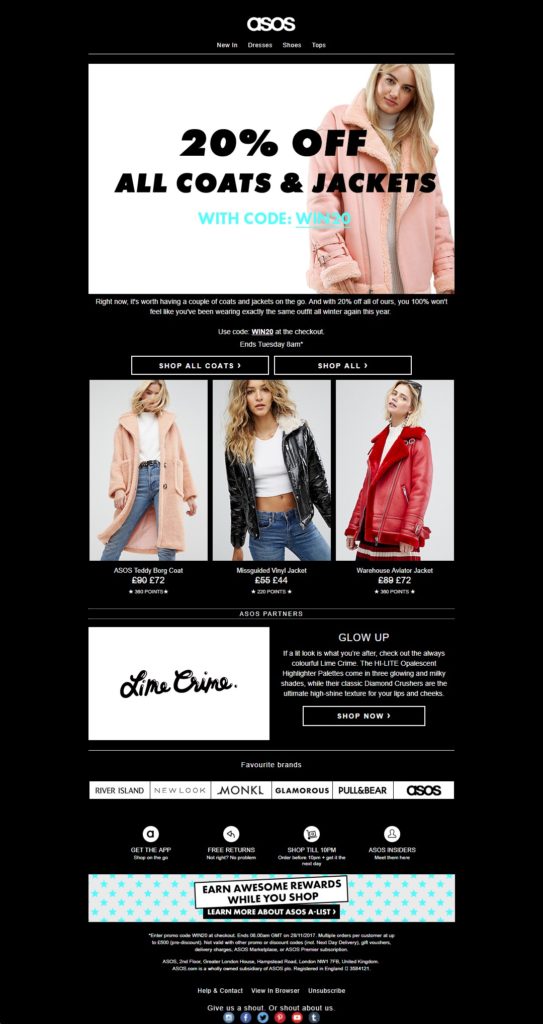
After browsing the ASOS website, adding something to our cart and abandoning the site, a few days passed but we received no cart recovery message. The lack of an abandoned cart email surprised us as the fashion retailer scored highly for this automation program in our previous study. One recommendation would be to use the abandoned cart program as a last-ditch attempt to bag the sale on the last day of the event.
John Lewis
John Lewis is a chain of upmarket department stores operating throughout the United Kingdom. In 2017’s Hitting the Mark, the retailer was crowned the King of Customer Experience, scoring 32 points from a possible 35.
For a well-respected brand like John Lewis, a shopping event like Black Friday necessitates a careful balancing act of attracting custom yet without cheapening its name. And no surprises, the department store did it in admirable style.
The John Lewis homepage tastefully reflected its Black Friday campaign which complemented its existing design. What’s more, the retailer fought back the competition by advertising that it was price matching a close competitor’s promotion.
At the start of the event and on the final day, John Lewis used on-brand responsive emails to promote its offer and link us off to the various price-dropped product categories.

Finally, we were impressed to see that John Lewis followed up with after a well-designed abandoned cart email to encourage us to complete our purchase. The cart recovery program delivered the email the day after we’d placed the item in our basket. We especially liked John Lewis’s emphasis on free and easy returns if we weren’t happy with the product once it arrived.
Timpson
Timpson is a British retailer specializing in shoe repairs, key cutting, and engraving, as well as dry cleaning and photo processing.
The brand came 96 out of 100 in our main report – did it improve its tactics for Black Friday?
In short, no. A year and a half on from joining the company’s mailing list – and a couple of months later buying a product – we still hadn’t received a marketing email. Timpson didn’t jump on the Black Friday bandwagon and this was evident from its homepage and website.
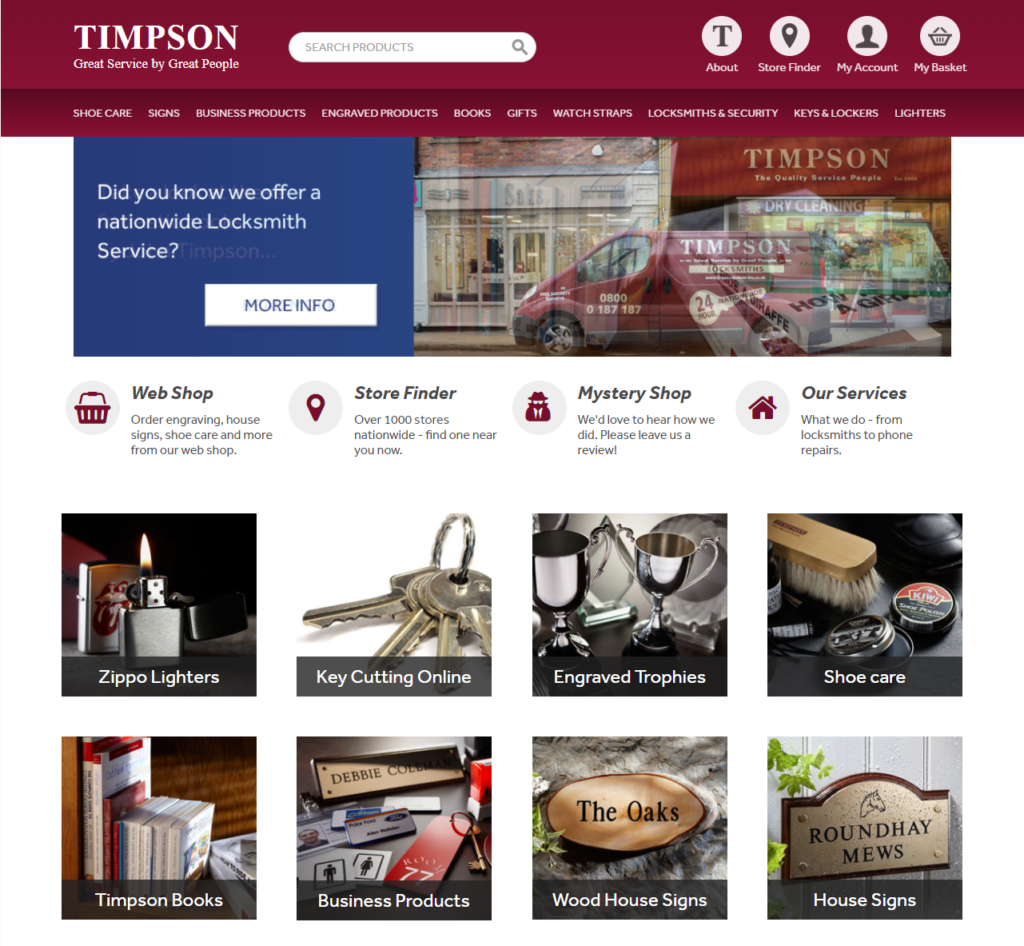
In the 2017 study, Timpson lost points for failing to send a cart recovery email. We tried again for this Black Friday special, to no avail.
Ralph Lauren
Ralph Lauren is a leader in the design, marketing, and distribution of premium apparel, homeware, accessories, and fragrances. In our 2017 report, the retailer performed quite poorly, coming in at 86 out of 100. However, we were pleasantly surprised by its efforts on Black Friday.
Understated Black Friday design appeared to be a theme for premium brands. Ralph Lauren named its event ‘Cyber Weekend Deals’ and the style of its website promotion was very much aligned with its typical brand colors.
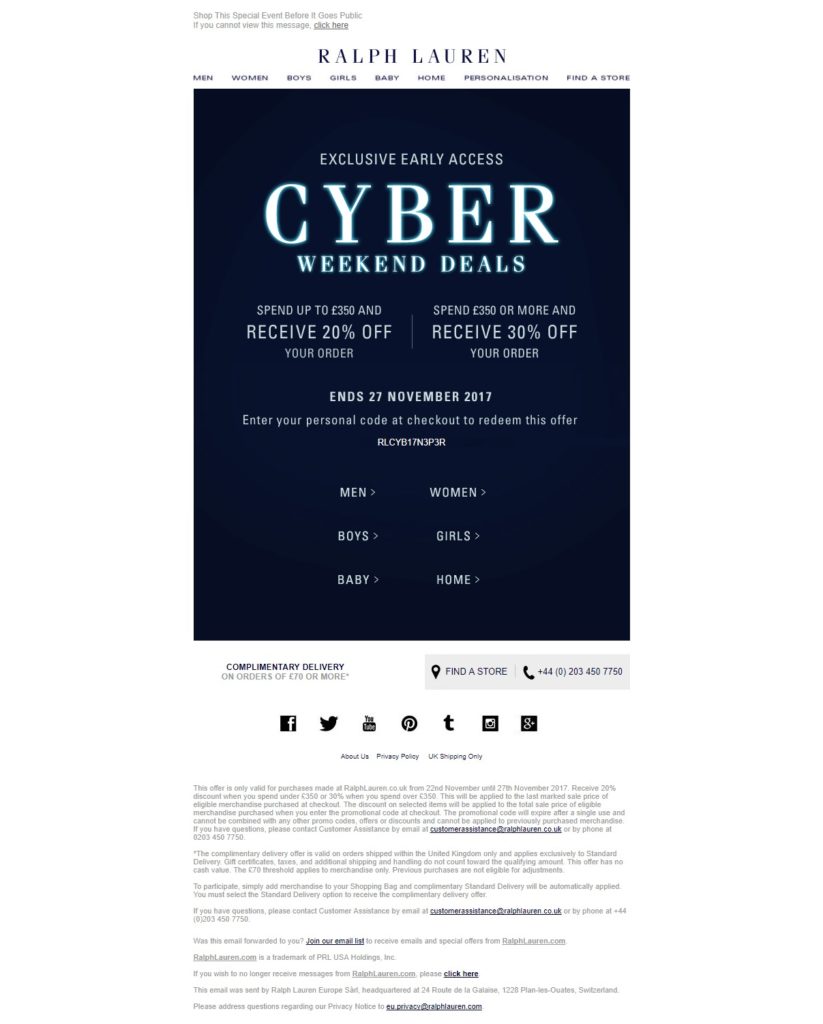
Ralph Lauren used email to the max during its Black Friday campaign, first offering us exclusive early access to its deals and then catching us with a cart email after ‘forgetting’ to purchase our chosen item.
Notonthehighstreet.com
Notonthehighstreet.com is the leading curated modern marketplace, connecting the best small creative businesses with the world. The brand came up trumps in Hitting the Mark 2017, coming in at joint 11th place – and it didn’t disappoint in our Black Friday review!
We really liked Notonthehighstreet.com’s cute Black Friday homepage banner styled out as a handmade typographic tapestry. Like many other retailers we reviewed, its Black Friday event spanned beyond the day itself.
Notonthehighstreet.com made sure we knew about its Black Friday campaign with an email to wake up to. It was creative and eye-catching with a GIF taking center stage, along with light-hearted copy to encourage us to click.

The Notonthehighstreet.com abandoned cart email was equally original, with witty words and helpful touches in case we were having issues checking out. A perfectly executed Black Friday campaign.
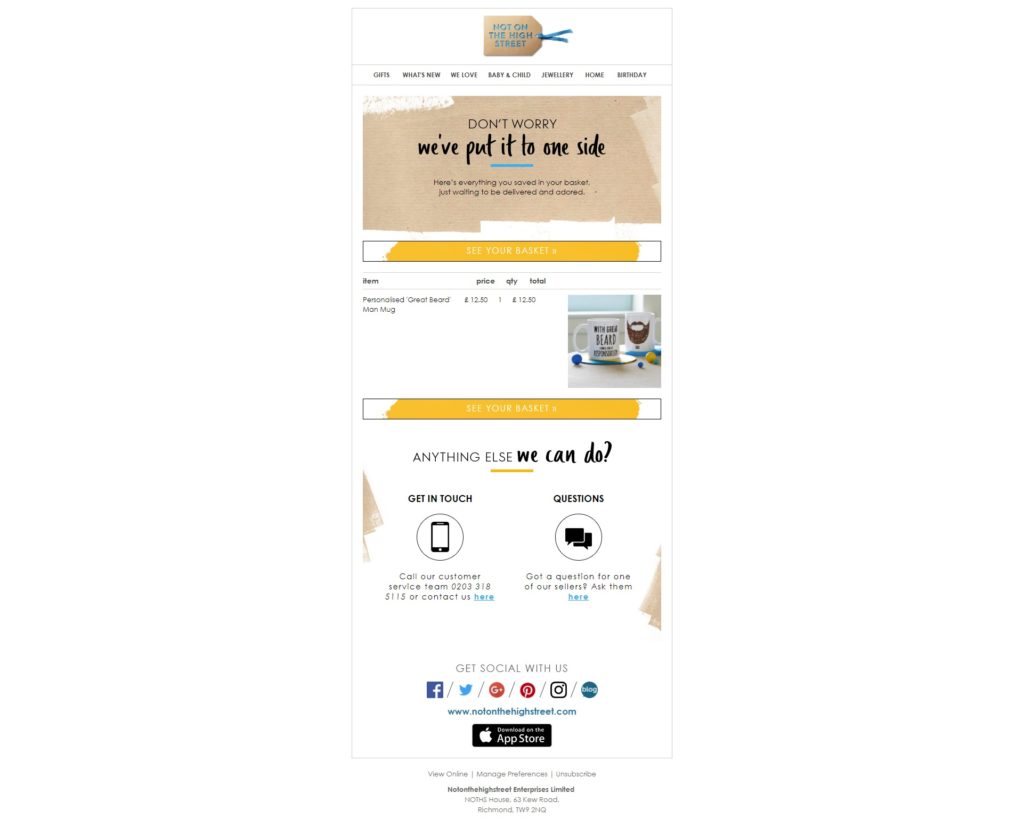
Key takeaways for 2019
Once an in-store shopping day, Black Friday has successfully merged with Cyber Monday to become one mammoth event.
Smartphones contribute more than $2bn of the $6.2bn from online sales, so mobile-readiness is essential. We witnessed some great examples of mobile-friendly emails, particularly from John Lewis and ASOS who used optimized templates, images, and copy, plus responsive content blocks.
However, what was jarring was the brands’ lack of use of email marketing automation, namely abandoned cart programs. Overall, there was a lack of personalization and a penchant for one-size-fits-all offers. Using smart segmentation and marketing automation these can be easily avoided.
Implement today
Our advice for this years’ Black Friday campaign would be to focus on key customer segments using Dotdigital’s RFM personas. Using these, you’ll be able to differentiate your new customers from your inactive users and loyal shoppers, making it easier to take each segment on a personalized, automated journeys.
For more inspiration, check out our Hitting the mark: Black Friday special report.
